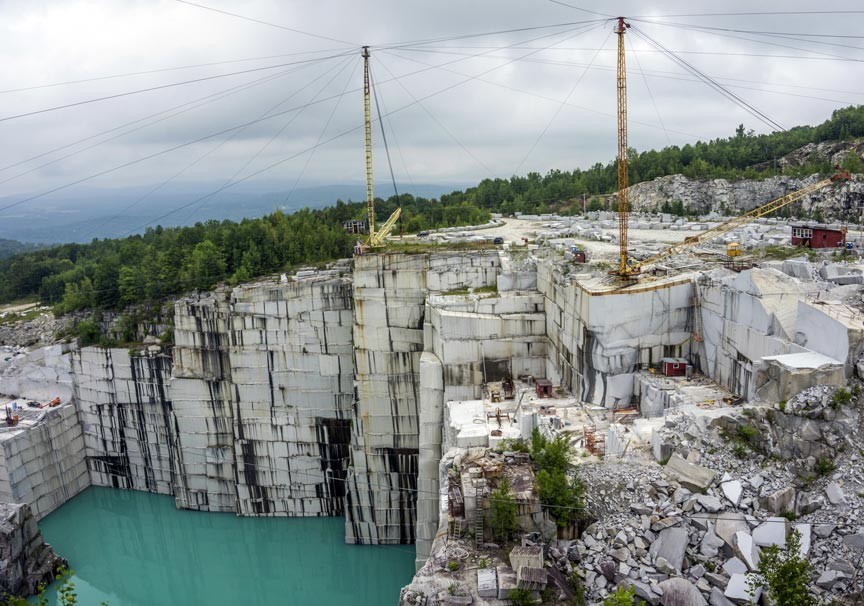A Journey Through Granite Quarries in South Africa: Introduction Nature's Virtuosity
A Journey Through Granite Quarries in South Africa: Introduction Nature's Virtuosity
Blog Article
Discovering the Rich History and Sustainable Practices of Granite Quarrying
As we depend on the precipice of revealing the detailed tapestry of granite quarrying, a trip through time reveals not simply the physical act of extracting rock but likewise the cultural and historical importance woven right into the extremely fabric of this method. From the ancient origins that laid the foundation for modern-day quarrying techniques to the sustainable practices that are shaping the future of this industry, each chisel mark on granite surfaces tells a tale waiting to be unearthed (granite quarries in south africa). The tradition of granite quarrying stretches much past mere extraction; it is a testimony to human resourcefulness, durability, and the long-lasting allure of this majestic stone
Ancient Beginnings of Granite Quarrying
Dating back to old civilizations, the method of quarrying granite has actually been an integral part of human background and building development. The earliest evidence of granite quarrying days back to old Egypt, where huge pyramids and detailed sculptures were crafted from this sturdy rock. The Egyptians used primitive devices to remove granite blocks from quarries, showcasing the value of this material in their monumental buildings.
Progressing in background, the Greeks also made considerable payments to the quarrying of granite. The Greeks utilized granite in different architectural marvels, such as temples and sculptures, demonstrating their ability in shaping and carving this hardy stone. The Romans further fine-tuned the techniques of quarrying granite, employing advanced tools like blades and hammers to remove and shape granite for their iconic frameworks.
With the centuries, the technique of quarrying granite has actually advanced, with modern-day innovations enhancing performance while keeping the ageless charm of this natural stone - granite quarries in south africa. From old people to modern building contractors, the heritage of granite quarrying remains to shape our world
Advancement of Quarrying Strategies
The evolution of quarrying strategies has been noted by a continuous progression in the direction of higher performance and precision in removing granite. Early quarrying strategies included hand-operated labor with basic devices such as chisels, hammers, and wedges to draw out granite blocks from the earth.
In even more recent times, the development of equipment reinvented the quarrying industry, enabling much faster extraction rates and boosted efficiency. Technologies such as diamond cord saws, high-pressure water jets, and pneumatically-driven drills have come to be standard in contemporary quarries, permitting exact cutting and minimized waste. Innovations in computer-controlled equipment and 3D modeling have actually enhanced quarrying procedures, leading to minimal ecological impact and boosted sustainability methods. As the need for granite proceeds to increase, the evolution of quarrying strategies continues to be indispensable to meeting market requires successfully and sustainably.
Cultural Importance of Granite
Granite holds an extensive social importance across numerous worlds due to its enduring existence in architectural work of arts and prized monuments. The social relevance of granite extends past its physical qualities; it symbolizes strength, security, and eternity, making it a sign of enduring heritages and customs.

Sustainable Practices in Quarrying
Among the abundant history of granite quarrying and its social relevance lies an expanding emphasis on sustainable techniques within the market. As environmental recognition and concerns about source exhaustion have enhanced around the world, the quarrying market has actually significantly welcomed lasting methods to minimize its impact on the setting and surrounding communities.

Furthermore, reclamation and rehab of quarry sites post-extraction are important to sustainable methods. By restoring quarried areas to a natural or helpful state, such as producing wildlife habitats or recreational spaces, quarriers can balance out the environmental footprint of their procedures and add favorably to the regional environment.
Heritage of Granite Quarrying
With a historic backdrop steeped in workmanship and commercial development, what enduring impact browse around this site has granite quarrying left on the landscape of modern culture? The heritage of granite quarrying transcends mere removal methods; it has shaped building marvels, urban landscapes, and cultural heritage worldwide. The sturdy nature of granite has actually made it a favored choice for monoliths, buildings, and infrastructure, standing as a testament to the ability and virtuosity of quarry workers throughout generations.
In addition, the economic footprint of granite quarrying can not be forgotten. The sector remains to supply employment possibilities and drive regional economic climates in areas where granite removal is common. It has additionally spurred technical improvements in quarrying techniques and equipment, bring about a lot more efficient and lasting practices.
In try this site regards to sustainability, the heritage of granite quarrying includes initiatives to alleviate ecological impacts through improvement tasks and responsible source monitoring. By balancing financial interests with environmental stewardship, the market makes every effort to guarantee that future generations can proceed to take advantage of this enduring natural source.
Verdict

Report this page